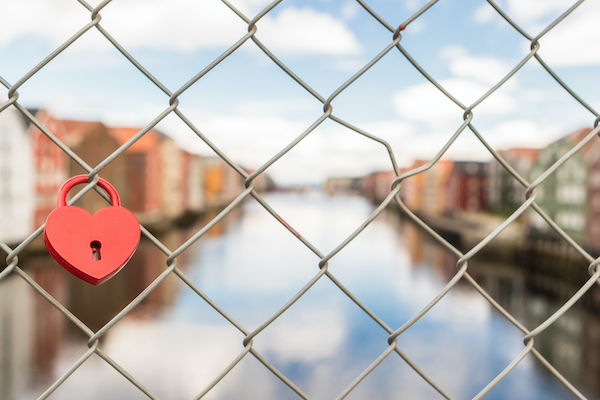Download my “8 Principles of Setting Healthy Boundaries” PDF!
Hey everyone, thanks for tuning in! As you know, this first season is called Relatable because we’re talking about how to deal with some of the major issues that arise in relationships. In the last episode we talked about people pleasing and how to stop it. Today, I want to talk about an issue that’s closely related to people pleasing: boundaries.
So many people struggle with setting and enforcing boundaries, and this lack of boundaries often results in a lack of real participation in our own lives. It sets up situations where you’re basically allowing anything and everything to control you—rather than being in control of yourself and your life.
To help you unpack this big issue, I’m going to break this episode down into 3 key parts:
- What you allow is what will continue: How to recognize and understand the problem and its consequences.
- How to immediately start using one of the best tools for setting boundaries: the art of saying “no.”
- A few more pointers for approaching your relationships with a healthier mindset around the issue of boundaries.
Part 1: Understanding the Problem (What you allow is what will continue)
One of my favorite quotes from Dr. Henry Cloud, an author and “guru” on boundaries is: “You’ll always get what you create or what you allow.” Another way to think about this is that we repeat what we don’t repair. In order to recognize and address the problem, we have to take an honest look at ourselves and our relationships:
- What have you allowed in your life that could be causing more harm than good? For example, are you a people-pleaser? Do you refrain from speaking up for yourself and become resentful or victimized later when people don’t understand how you feel?
- Take the online self-assessment – boundaries quiz to see where you are with your own boundaries.
Part 2: Stop in the name of love (learn to say no)
One of the hardest boundaries to establish is the art of saying “No.” It can bring up feelings of guilt and obligation, but the truth is that “No” is a boundary we need if we are going to live a healthy and intentional life. Think about it this way:
- It’s ok to say No. Are you too accessible? Saying yes to every request often breeds resentment and robs you of your ability to save your “yeses” for things that really matter to you and that you actually have time and energy for.
- “No” is a complete sentence – You don’t have to explain why you declined a request. The bottom line is that you are unable to do it; the reason why doesn’t matter. You just can’t. Period. End of sentence. Check out this mindful.org article, “No” Is A Complete Sentence, for more on this idea.
- Saying no is an act of self-care – AND it shows you care for others too! Clearly established boundaries help us to take care of ourselves and each other emotionally, physically and spiritually.
- Just say no. Start cultivating the habit of saying “no” the very next time someone asks you to do something you don’t really want or need to do.
Part 3: Finding Courage and Making Real Change
Another great quote from Dr. Henry Cloud sums up boundaries quite well: “Boundaries define us. They define what is me and what is not me. Boundaries help us keep the good in and the bad out.”
- If you’re hesitant to start setting boundaries in your
relationships, consider this:
- There’s nothing “bad” about boundaries, despite common misconceptions!
- Boundaries are a sign of self-respect.
- Boundaries teach others how to treat you.
- Important note: it’s not all about you.
- Setting up boundaries means recognizing that other people have boundaries, too.
- It means asking for consent (another good habit to cultivate!) before unloading your day on someone else or entering into a heavy conversation at that casual dinner reception. It’s the kind thing to do and it sets the tone for others to follow.
- By honoring others’ boundaries, you are also demonstrating awareness, mindfulness, and just how strong your own boundaries and self-respect are.
- How do you start getting better at boundaries? Here are a few key points to help you in your boundary-setting journey:
- Check out this article for more Ways to Build and Preserve Better Boundaries
- Know thyself to know your boundaries. Establish what is okay and not okay for you – Know your limits and become aware of what you need, what’s in your way, and what needs to go. Consider both your past and your present relationships and how they were or are affecting your boundaries.
- Be honest. Be clear. Be direct. (And be done!) Enforce boundaries you set with this mantra: Be honest. Be clear. Be direct. (And be done!).Once you’ve decided on a firm boundary, make sure you communicate it with clarity and firmness to those around you. Don’t hesitate or shrink away from this—and never allow anyone to weasel their way past your boundaries or try to convince you their unreasonable!
- Make self-care a priority – And seek support if you need help establishing healthy boundaries.
Download my “8 Principles of Setting Healthy Boundaries” PDF!
*Theme song for the Back to Life with Nicole Green Podcast written and produced by Audible Cosmos, LLC.
Podcast: Play in new window | Download
Subscribe: Apple Podcasts | More

